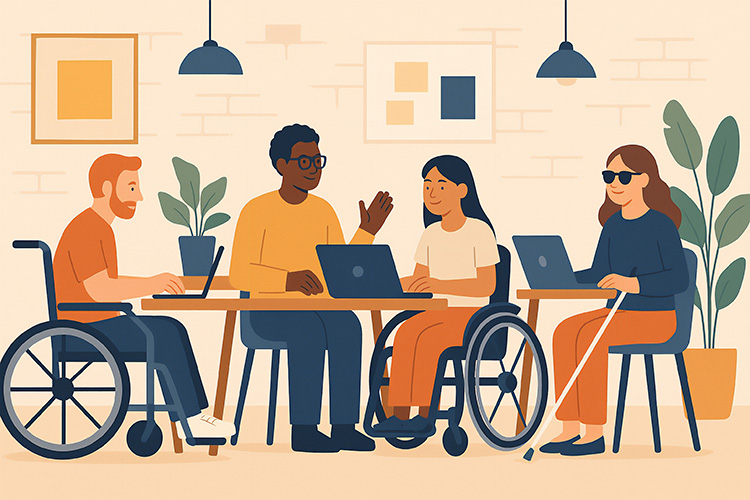As I do most evenings, I was scrolling through LinkedIn posts, looking for content that would inspire a blog post and, in the process, stay up to date with the accessibility space and all that it encompasses.
I came across an excellent post by Morrison M. Ed where they explained the difference between equity and inclusion from the viewpoint of a person with disabilities. Morrison is DeafBlind. Their perspective is not only unique but also authentic. Their perspective is their lived experience.
Their post is the inspiration for this post.
October is National Disability Employment Awareness Month (NDEAM). It is a time to celebrate the talents and perspectives that people with disabilities bring to the workplace and to examine what it truly takes to build inclusive and equitable environments, not just online, but within our teams and communities as well.
It's easy to think inclusion and equity are just HR buzzwords that mean the same thing. We often hear the terms mentioned together, and for good reason. They're both essential, but they're not interchangeable.
Inclusion is about being part of the community. It's about ensuring that people with disabilities are included in meetings, projects, and decision-making processes. It's making sure they are integral team members. Inclusion ensures that everyone has a voice and feels valued. It's about creating spaces, whether digital or physical, where participation isn't just possible, but is also encouraged.
Equity takes that a step further. Equity is about recognizing that people's needs differ, and providing what each person requires to thrive. It’s acknowledging that people don’t all thrive in the same environments, and that’s expected and it's okay. Equity means providing accessible tools, flexible processes, and support that meet people where they are, so every employee has what they need to succeed.
Think of it this way: inclusion gets you a seat at the table, but equity makes sure the table is the right height.
Celebrating NDEAM goes beyond valuing the contributions of employees with disabilities. It’s a commitment to creating systems, tools, and mindsets that make the workplace accessible, fair, and empowering for everyone.
A human author creates the DubBlog posts. The AI tools Gemini and ChatGPT are sometimes used to brainstorm subject ideas, generate blog post outlines, and rephrase certain portions of the content. Our marketing team carefully reviews all final drafts for accuracy and authenticity. The opinions and perspectives expressed remain the sole responsibility of the human author. (Updated Sept. 15, 2025)

